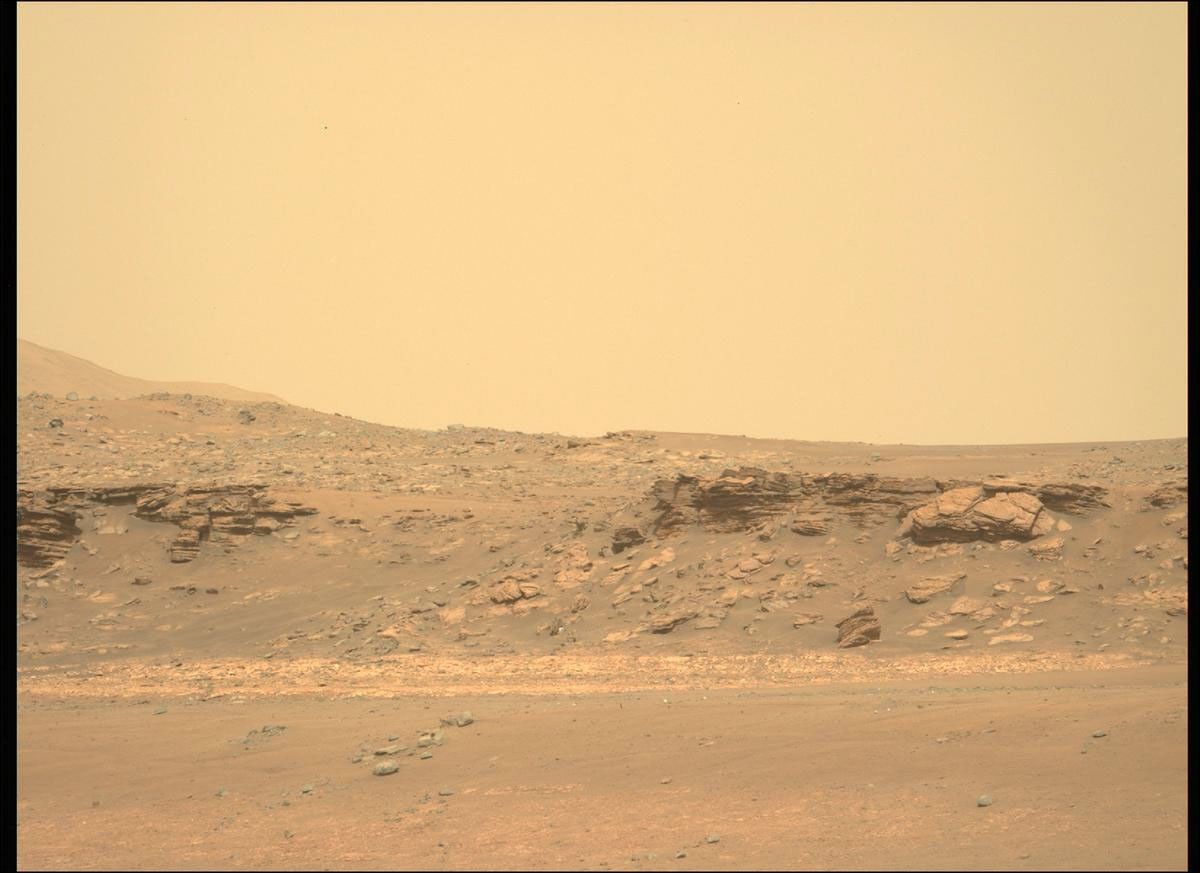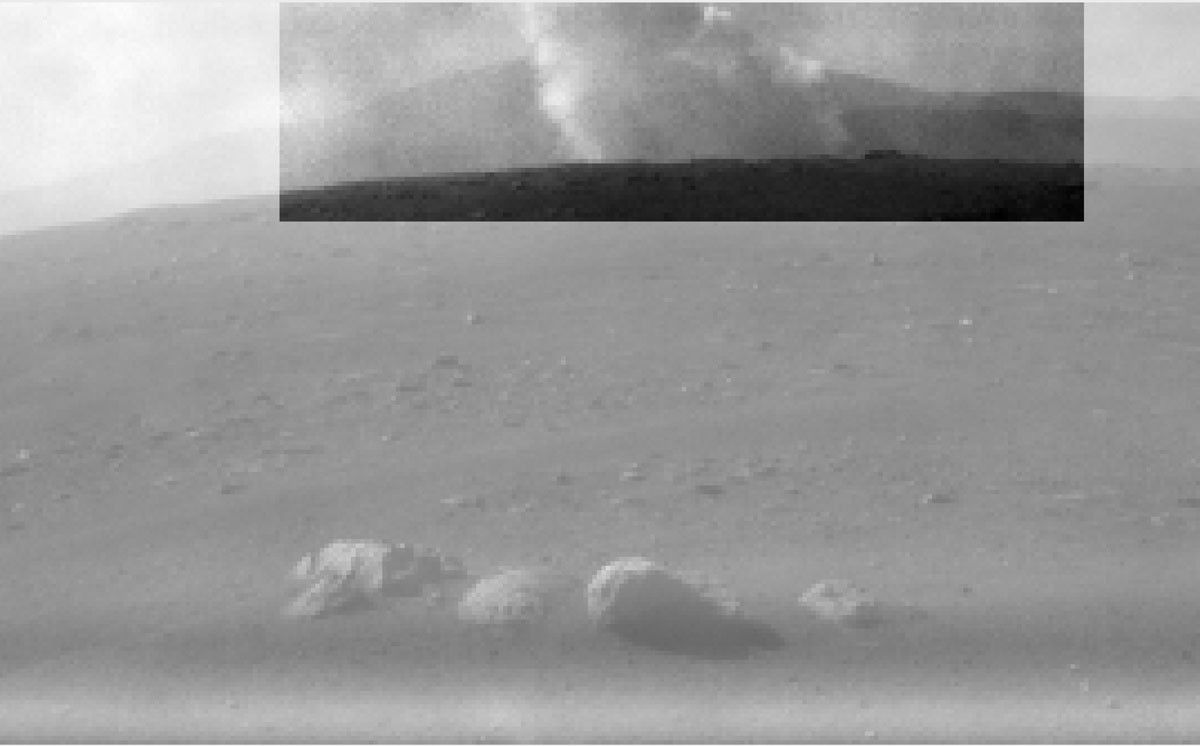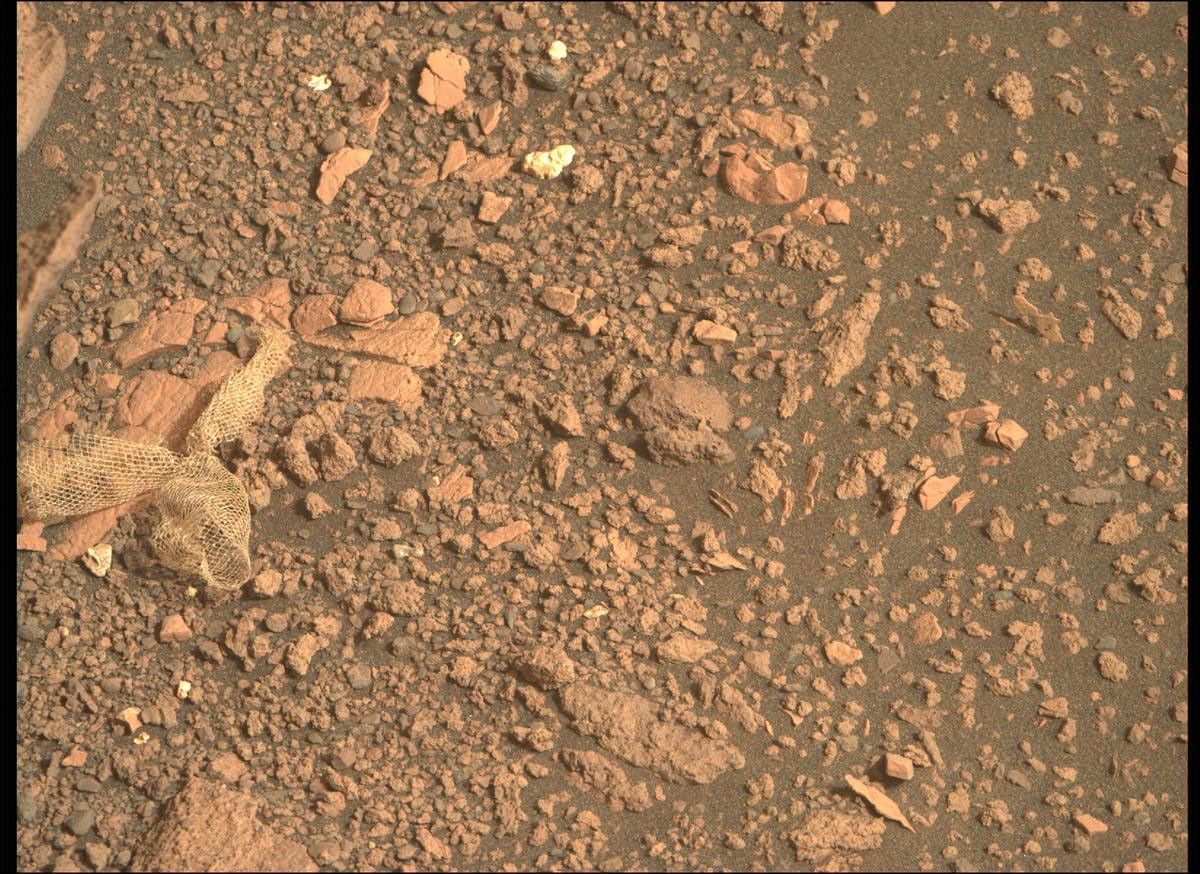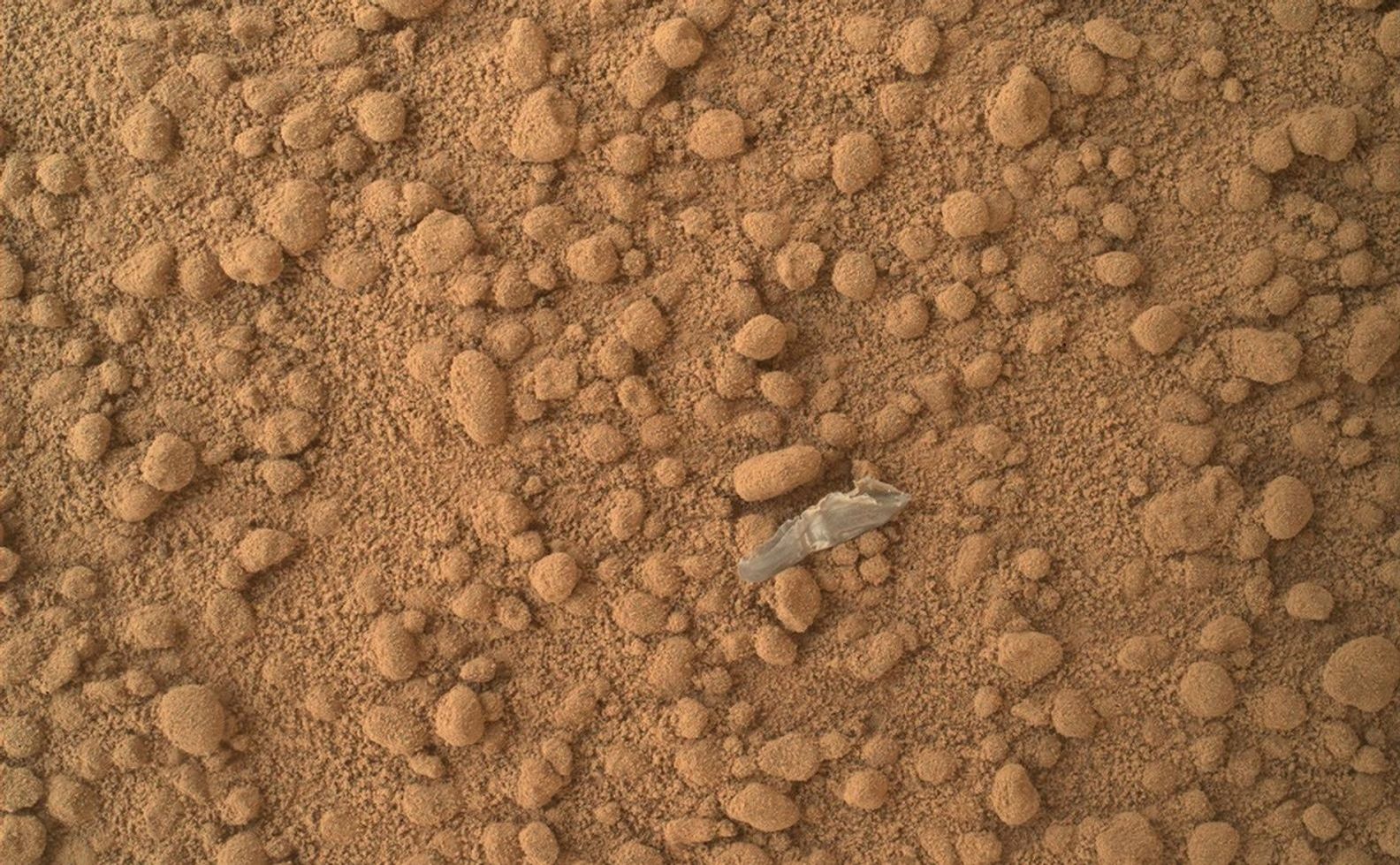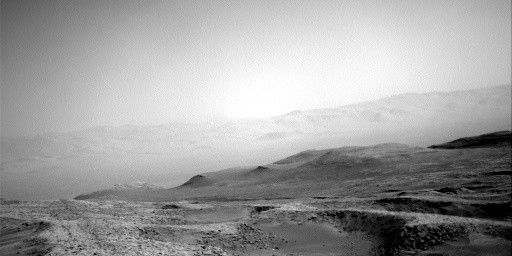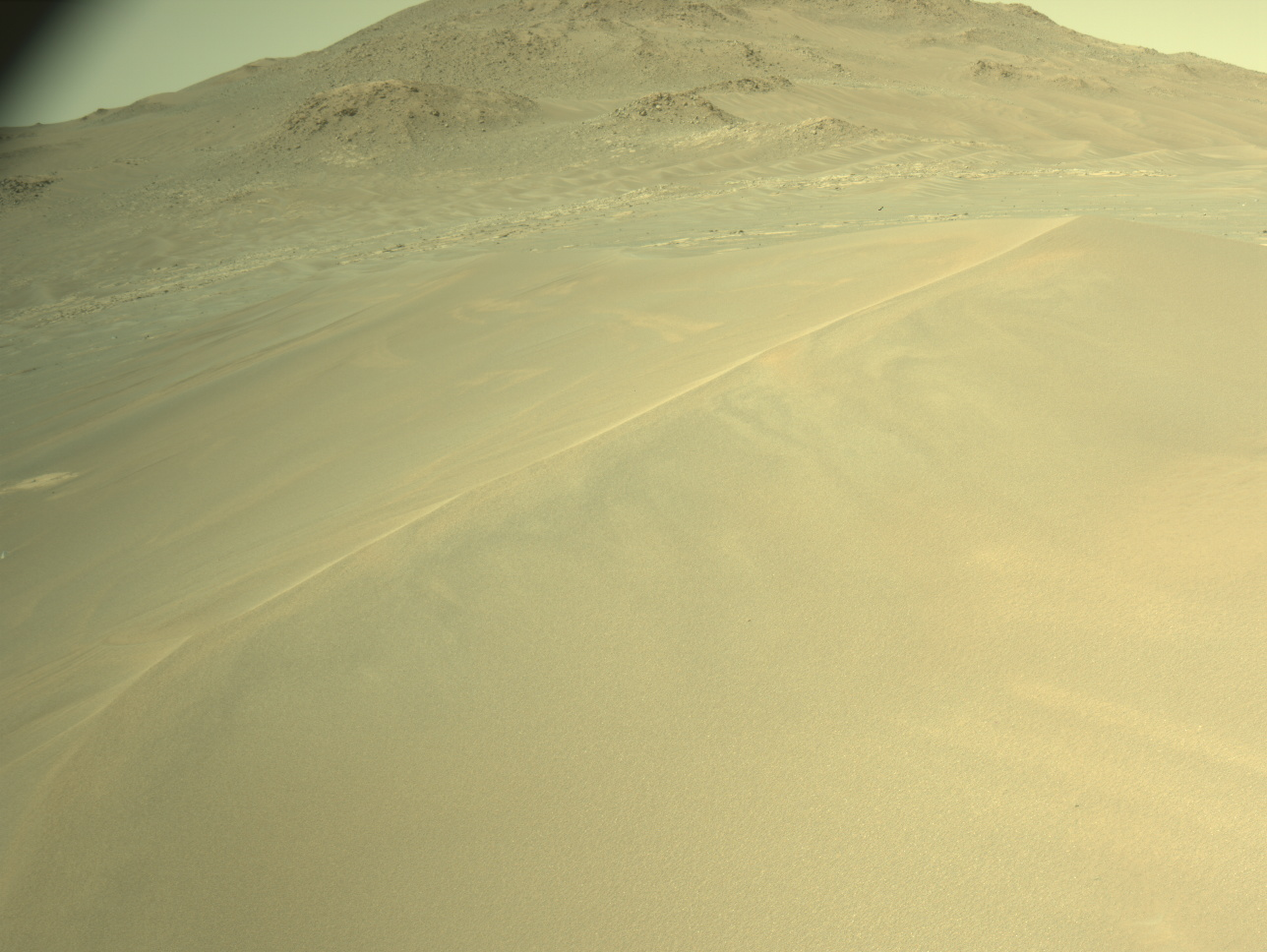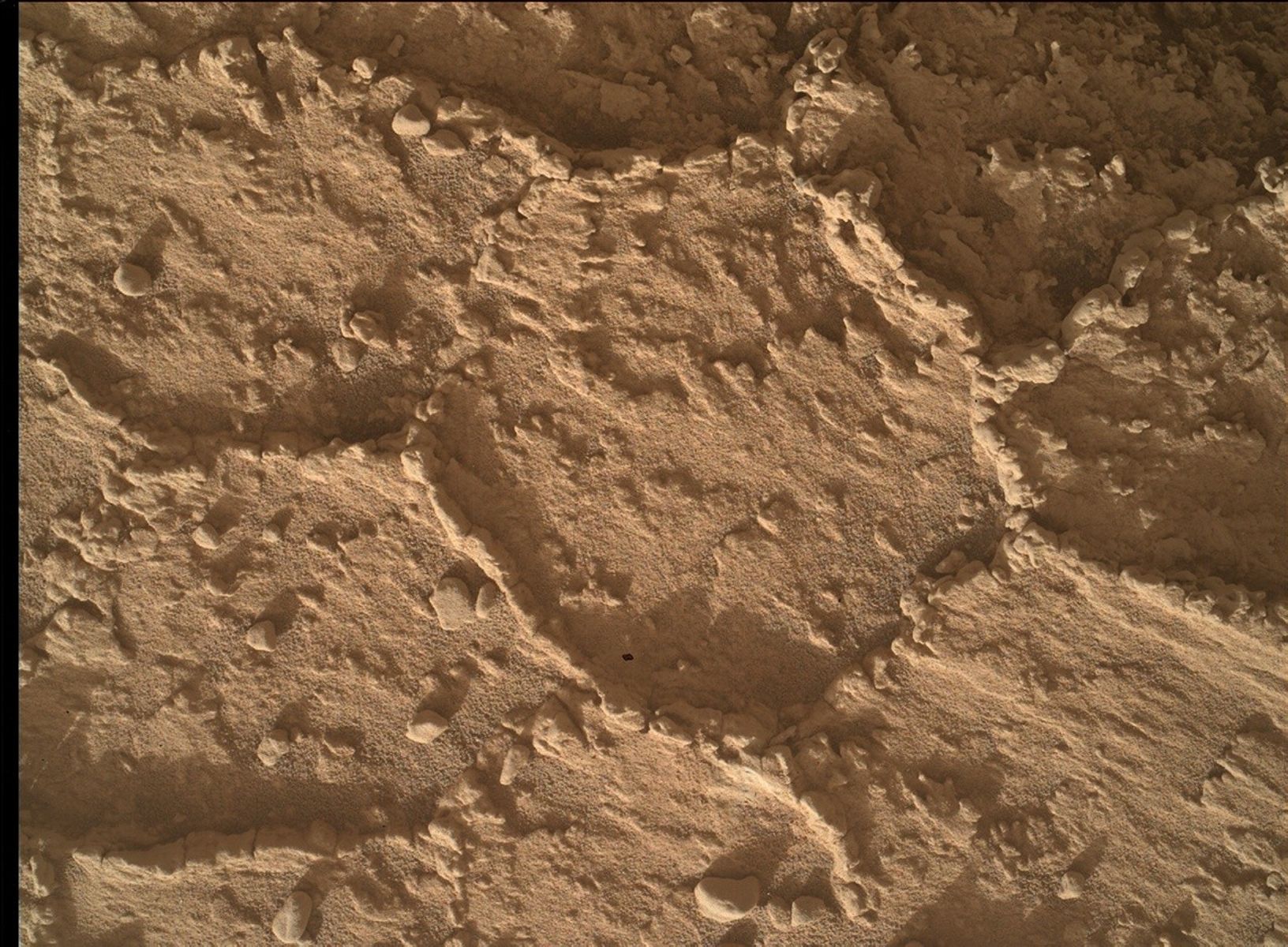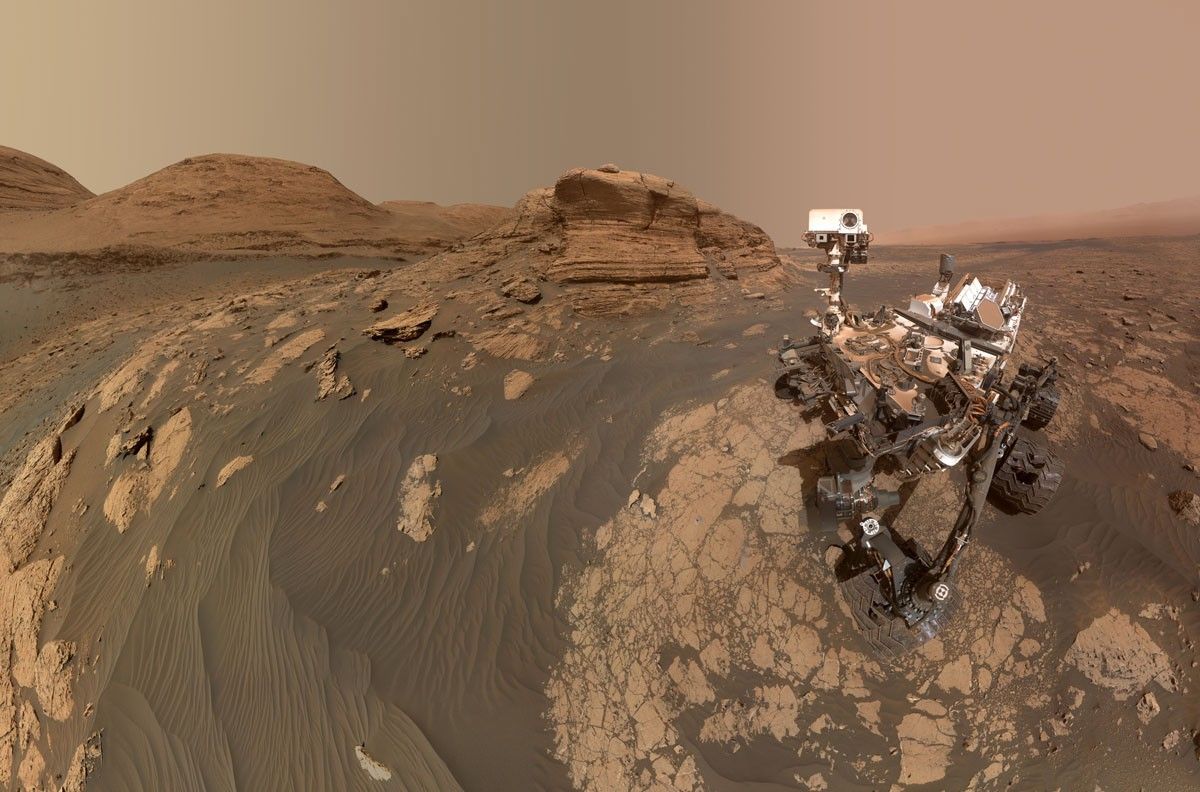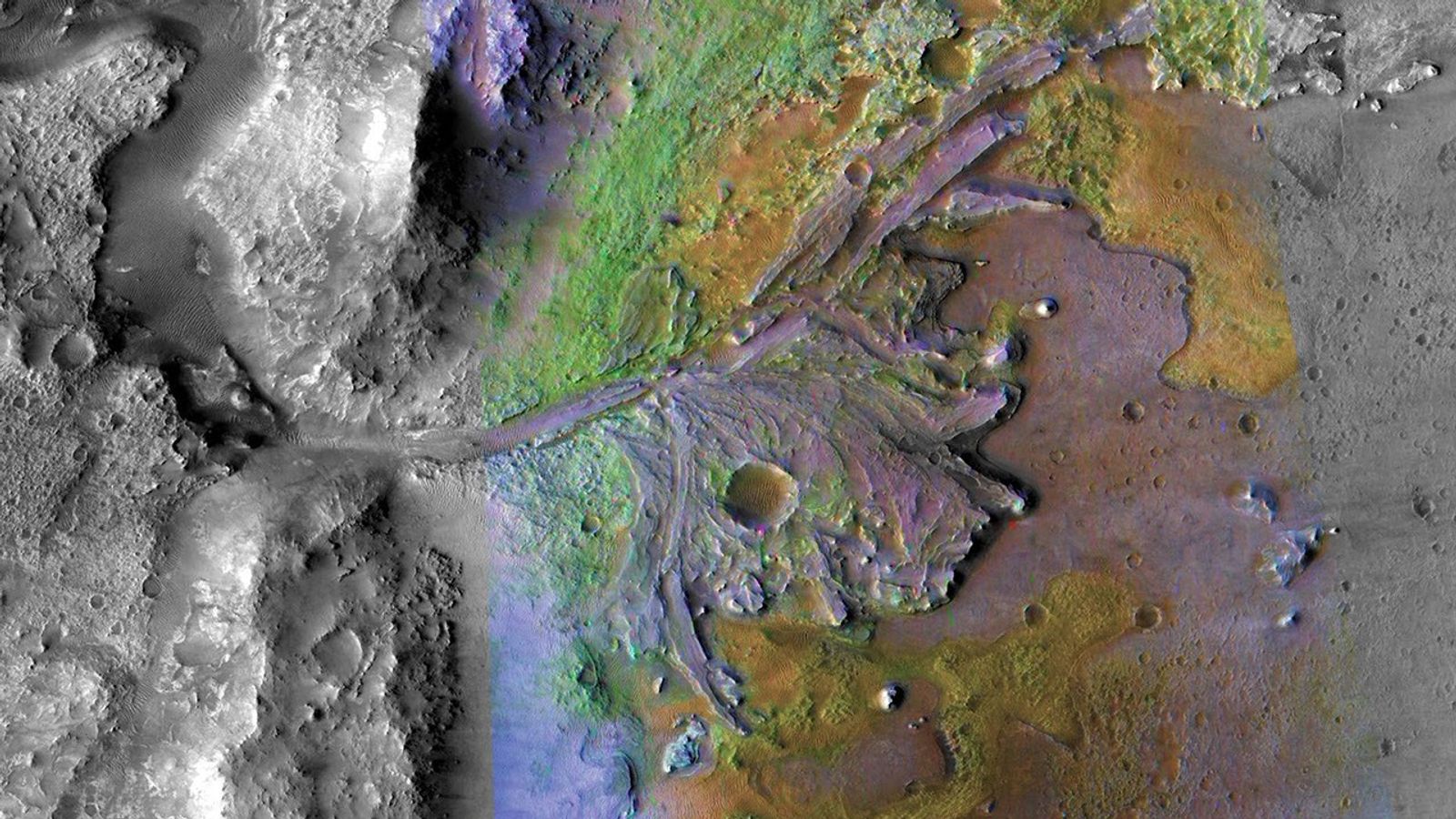When Perseverance landed on Mars on February 18, 2021 the entry, descent, and landing (EDL) hardware was discarded onto the surface at a safe distance away from the rover.
Some of that EDL hardware was later imaged by Perseverance and Ingenuity. For example on Sol 414 (April 19, 2022), the Ingenuity helicopter returned a detailed color image of the discarded parachute and backshell located 1 km to the northwest of the landing site.
Some of the EDL hardware broke into smaller pieces when it impacted the surface. These pieces of EDL debris have been spotted in images of the Hogwallow Flats region, a location roughly 2 km to the northwest of the EDL hardware crash zones. As of Sol 508 (July 24, 2022), the operations team has catalogued roughly half a dozen pieces of suspected EDL debris in this area. Some of these EDL debris are actively blowing around in the wind. So far, we’ve seen shiny pieces of thermal blanket material, Dacron netting material that is also used in thermal blankets, and a stringlike material that we conclude to be a likely piece of shredded Dacron netting.
We first started seeing the EDL debris in Hogwallow Flats on Sol 411 (April 16, 2022), while the Perseverance rover was still in the Three Forks region of Jezero crater. We spotted an unusually bright material in a Mastcam-Z image of the surrounding hillsides, roughly 400 meters to the northwest of the rover. The bright material covered 6 pixels across in the fully-zoomed Mastcam-Z images, which corresponded to roughly ~15 cm in size. The material was given a descriptive name: “bright material”. No one knew what it was at the time, but perhaps the rover would take a closer look as it climbed up onto the delta in the coming weeks.
A few weeks later, Perseverance entered the Hogwallow Flats region and acquired a high-resolution, 360-degree Mastcam-Z panorama. As those images were being downlinked to Earth, a science team member in Europe spotted the bright material (at 2:50 AM Pacific time) in a Sol 467 (June 12, 2022) Mastcam-Z image and immediately suggested that it might be a piece of debris from the Entry, Decent, and Landing (EDL) system. Later that morning it was confirmed by the EDL hardware team at JPL: Perseverance had imaged a piece of multi-layer insulation (MLI), likely from the skycrane, which flew away from Perseverance’s landing site after touchdown, ensuring it would crash safely out of range from the rover. The dot pattern on the material matched the pattern of the thermal blankets installed onto the spacecraft. The blankets were made in one of two varieties: Perforated Aluminized Kapton (PAK) or Mylar – the bright material was likely one of these two materials. Subsequent images of the blanket showed that it was snagged on a rock and could be seen flapping in the breeze.
Mystery solved! Well, sort of. How did that material get all the way over to Hogwallow Flats? The skycrane crash site is located 2 km to the southeast. It is possible that the energy from the skycrane crash may have first ejected the material into the air before it settled down in the Hogwallow Flats region. And some of the smaller pieces may have been expelled from the crash ballistically. But it appears that the material was simply blown by the wind over the course of several days or weeks.
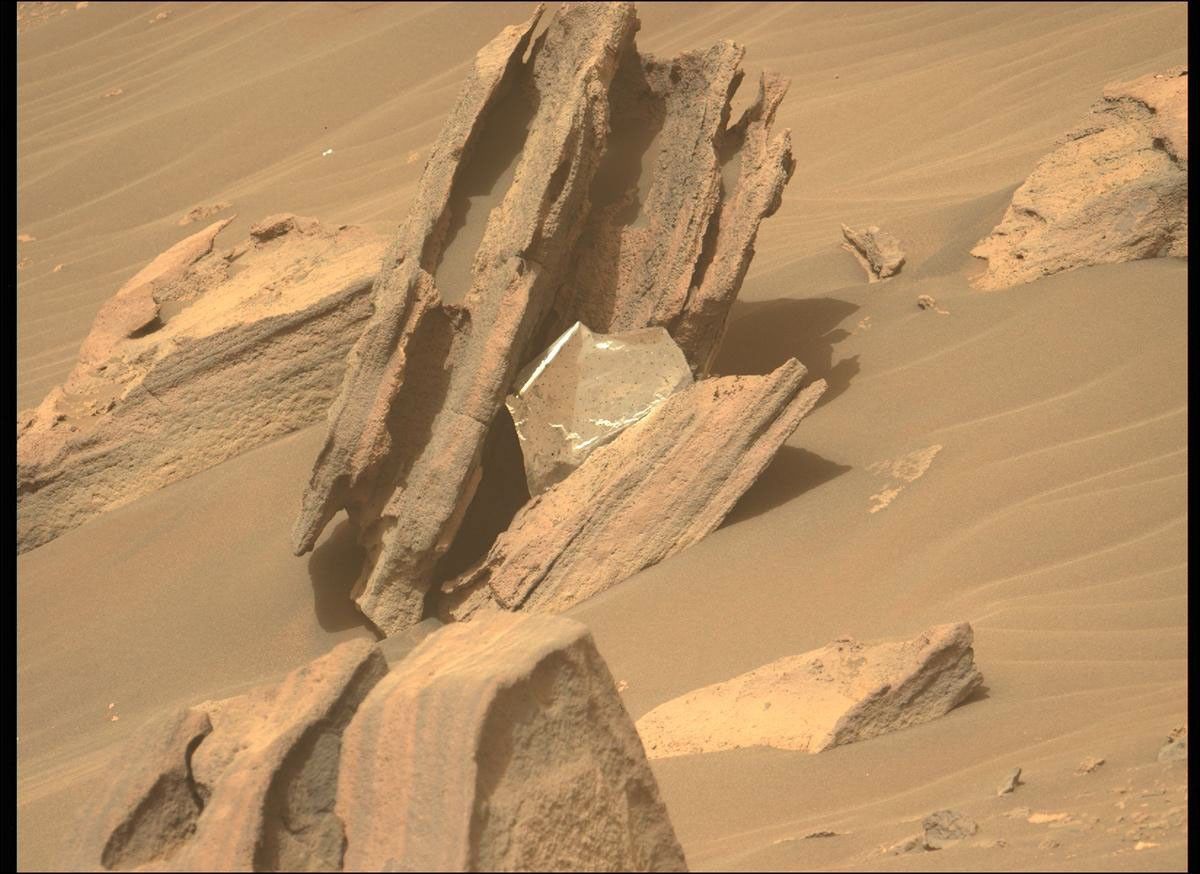
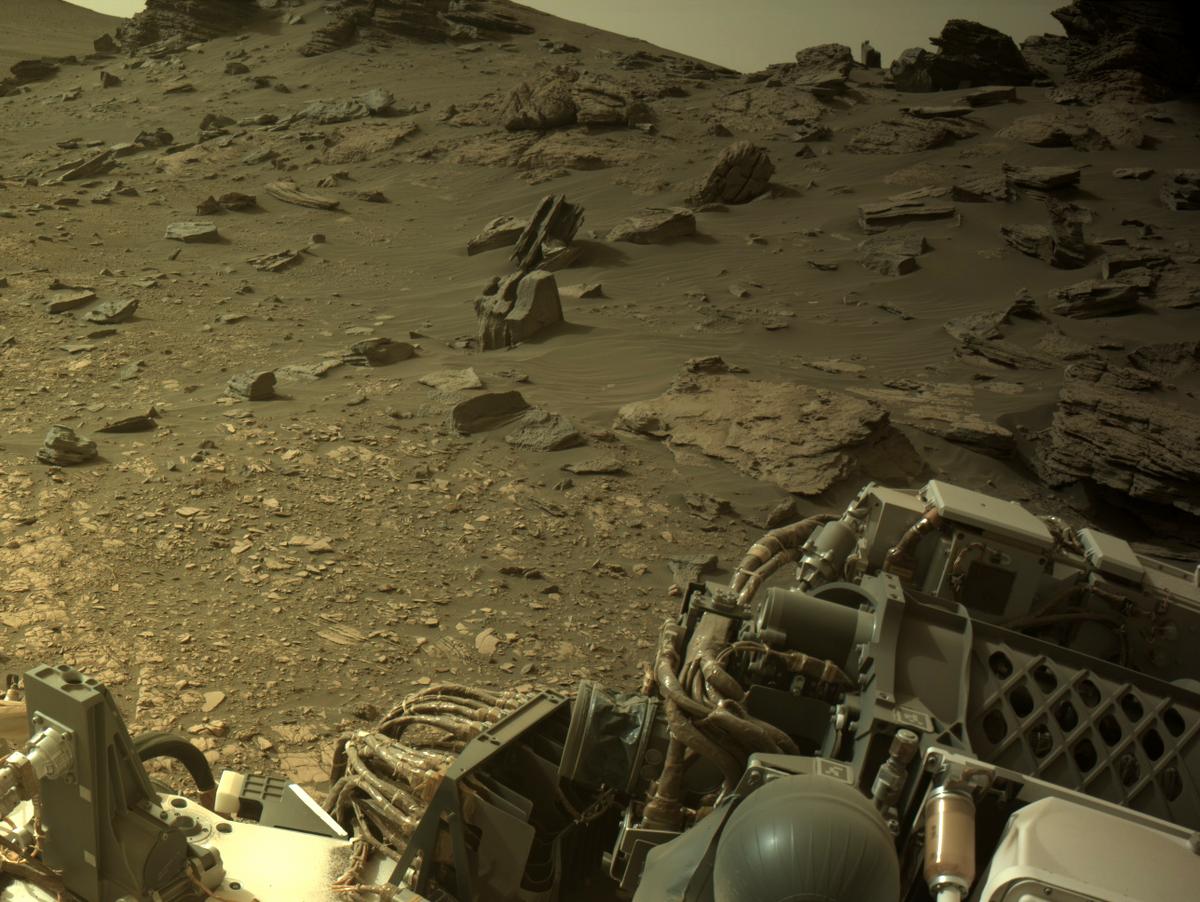 | 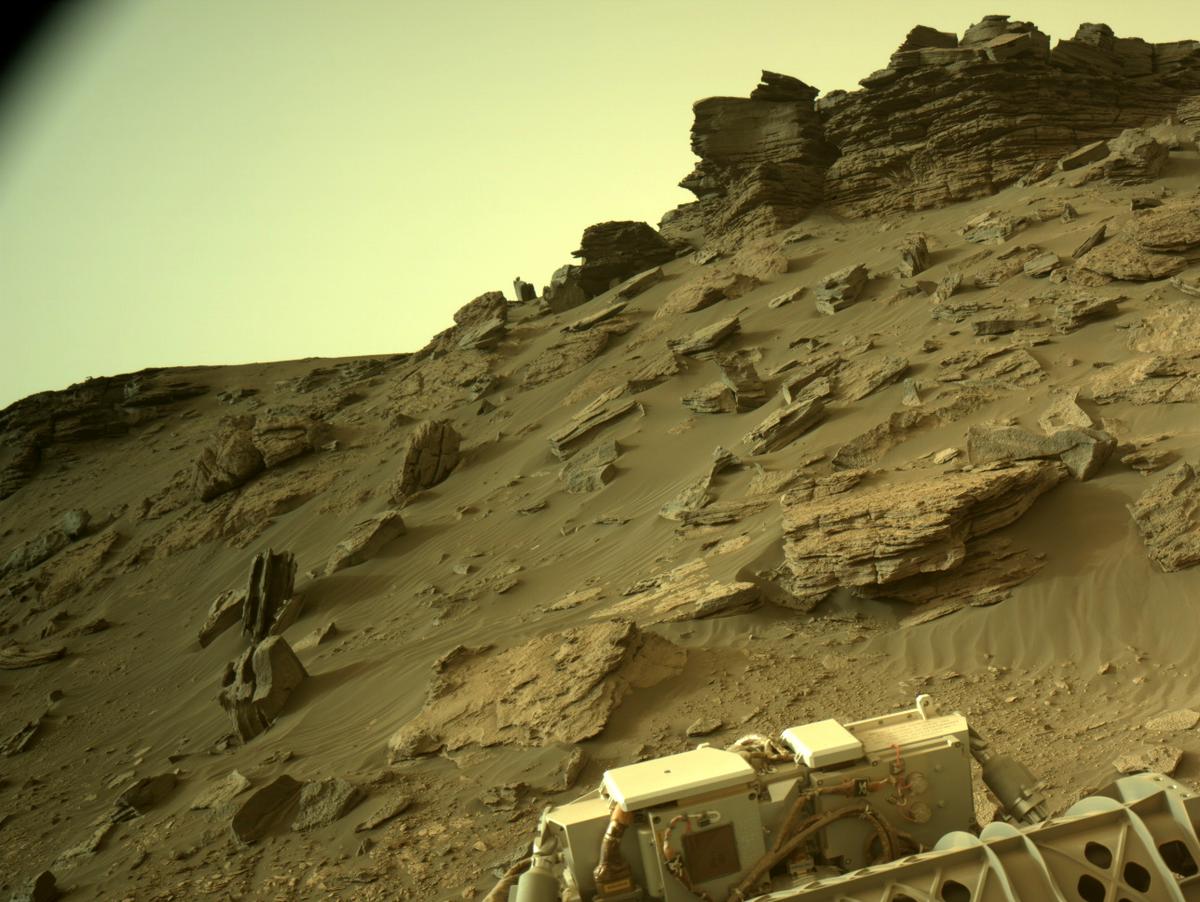 |
As more images from the Hogwallow Flats region were sent back to Earth, more pieces of EDL debris were spotted by the operations teams. The Sol 474 (June 20, 2022) Navcam images below shows a piece of debris moving from one location to another over the course of a week. That particular piece of material had an unusual shape and wasn’t definitively identified until a Mastcam-Z high-resolution image captured it on Sol 477 (June 23, 2022). The debris was confirmed to be a piece of Dacron netting material, commonly used in thermal blankets (see next figure).
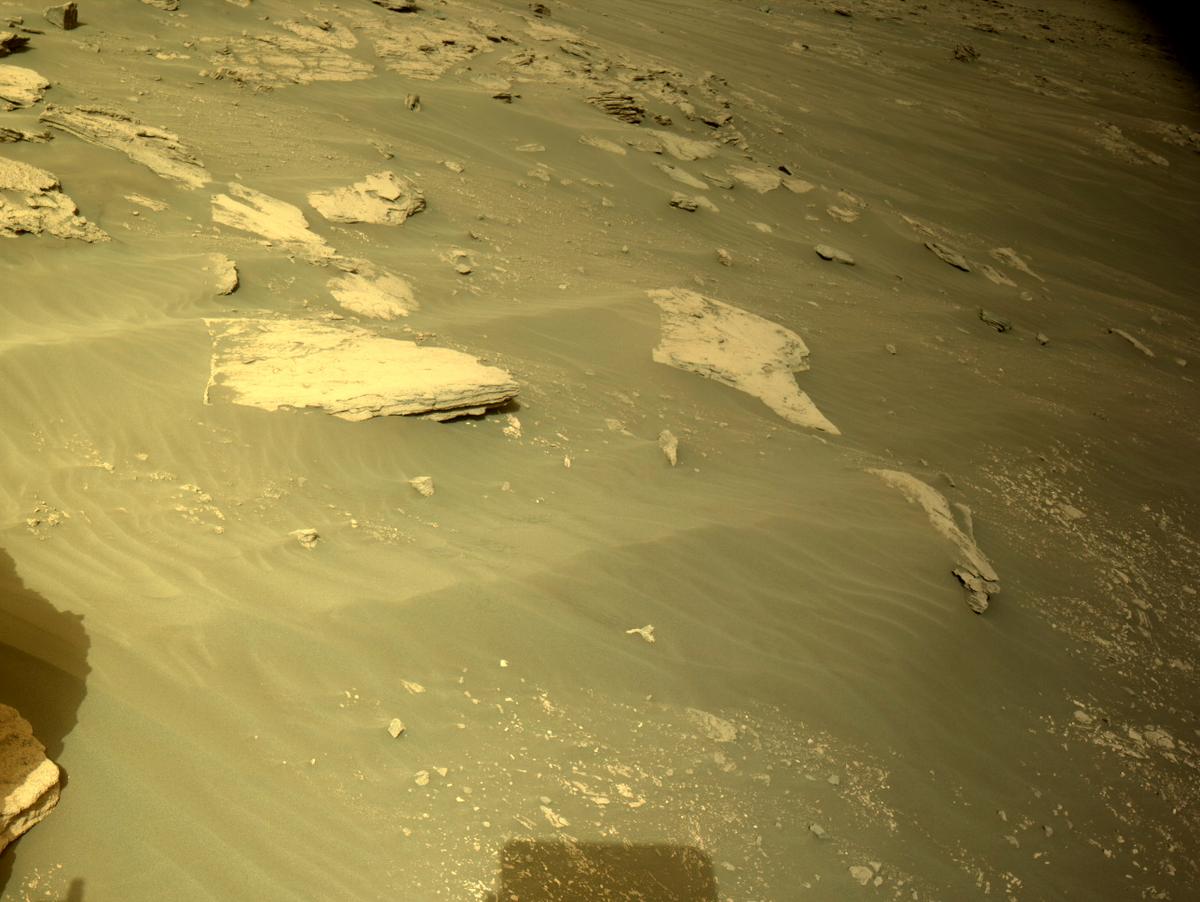 |  | 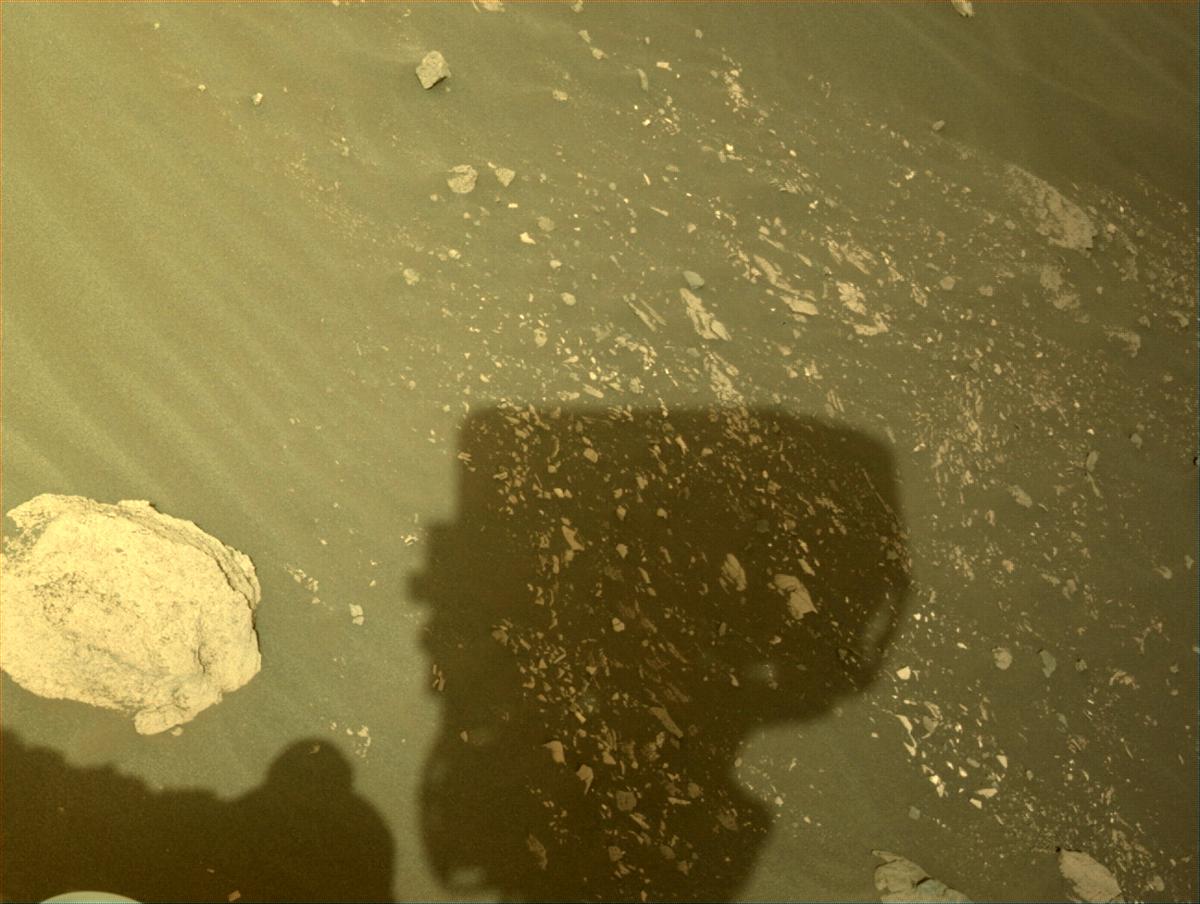 |
Three weeks later, an object that appeared as a ball of knotted, stringlike material blew underneath the front of the rover (Sol 495, July 11, 2022 Front Hazcam image, below). Before the string could be imaged by the higher-resolution Mastcam-Z cameras, the string was blown away by the wind (second image, below). The hardware teams suspect that this is another piece of Dacron netting, based on the observed 2x2 mm2 grid mesh pattern. They noted that this particular piece of netting appears to have undergone significant unraveling/shredding, suggesting that it was subjected to strong forces (see the Front Hazcam image of the skycrane EDL plume).
 | 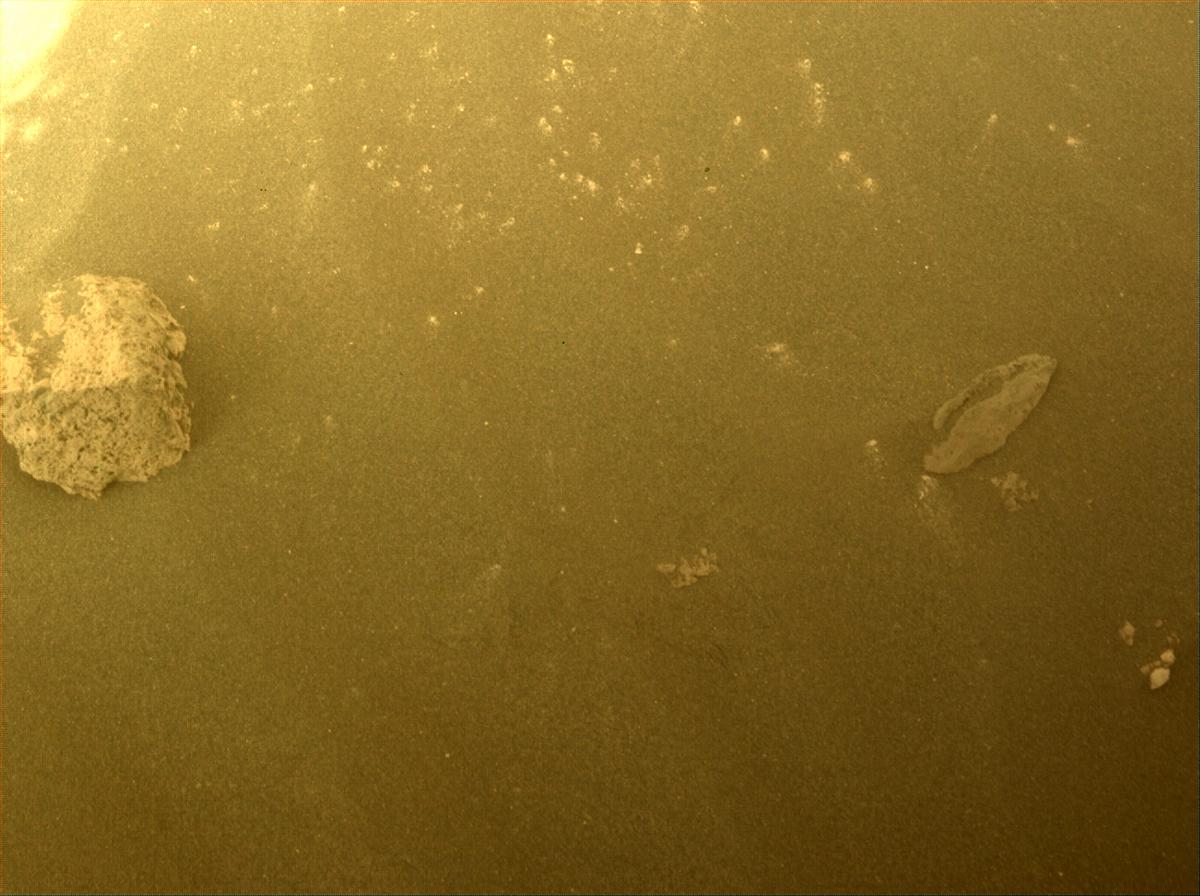 |
Hogwallow Flats appears to be a natural collecting point for windblown EDL debris. Perseverance team members are reviewing images of the debris, checking to see if the material may pose as a potential contamination source for the sample tubes from this area. Although there are no immediate concerns identified by the teams at this time, the teams are documenting the EDL debris materials as they are identified. Additionally, the rover carries a set of witness tubes, which are tubes pre-loaded with materials that are systematically exposed to the Martian and rover environments to provide further documentation of sample cleanliness. Engineers have also considered the possibility that EDL debris might be a source of entanglement risk to the rover and have concluded that such a risk is low.
It should be noted that discarded debris are common in space missions. Early on during the Mars Science Laboratory (MSL) mission, the Curiosity rover drove near a suspected EDL debris field and spotted a number of pieces of bright material believed to be from the EDL system (see figure). However, none of the MSL material was definitively identified as EDL debris due to the lack of detail in the images.
The Mars Exploration Rover (MER) Opportunity rover imaged a heatshield up close on Sol 335 (January 2, 2004) of the surface mission. Those images revealed a debris field that stretched several meters, and included charred heatshield material, metal springs, and thermal blanket material. The Curiosity images also showed a rock (“heatshield rock”) that is believed to be a meteorite – the original version of EDL debris.
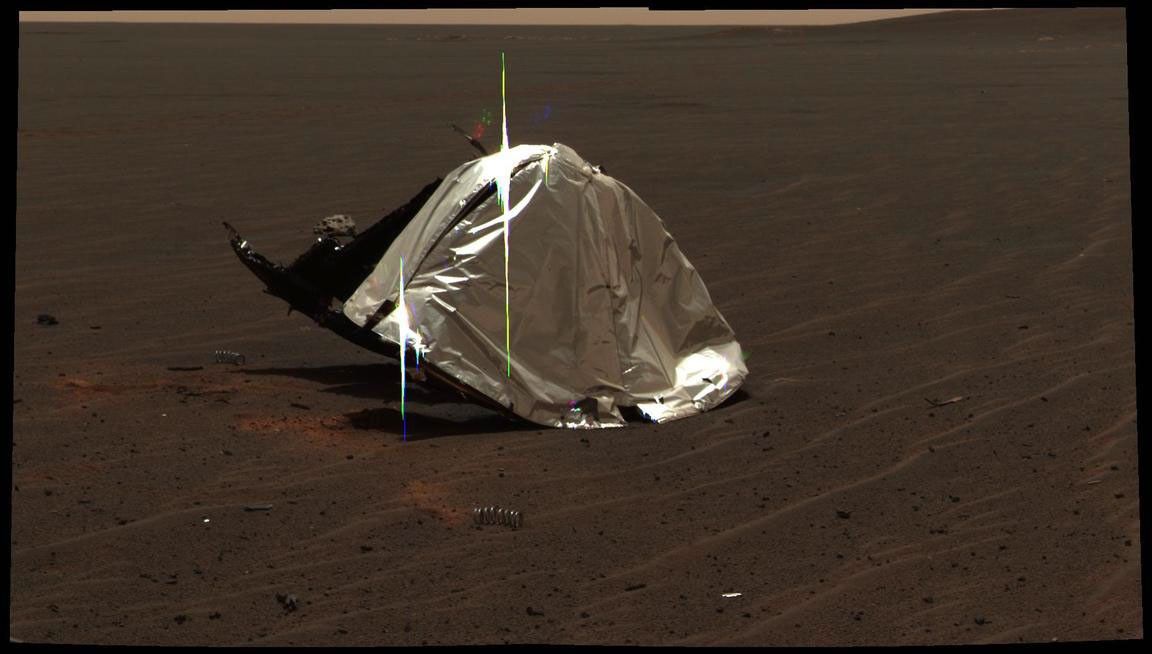
So what does this all mean for Perseverance and future missions? With camera technology continuing to improve, imaging teams on future missions will be able to more readily identify EDL debris in images. Engineers designing EDL hardware for future missions will need to consider the impact (literally) of their designs on both Mars and on the mission requirements. In the meantime, as Perseverance continues to collect samples for eventual return to Earth, the Perseverance imaging teams will continue to review images of the terrain for possible sources of EDL debris. The sampling teams will also continue to monitor potential sources of contamination to ensure the integrity of the returned sample cache.
Written by Justin Maki, Imaging Scientist and Mastcam-Z Deputy Principal Investigator at NASA's Jet Propulsion Laboratory




























